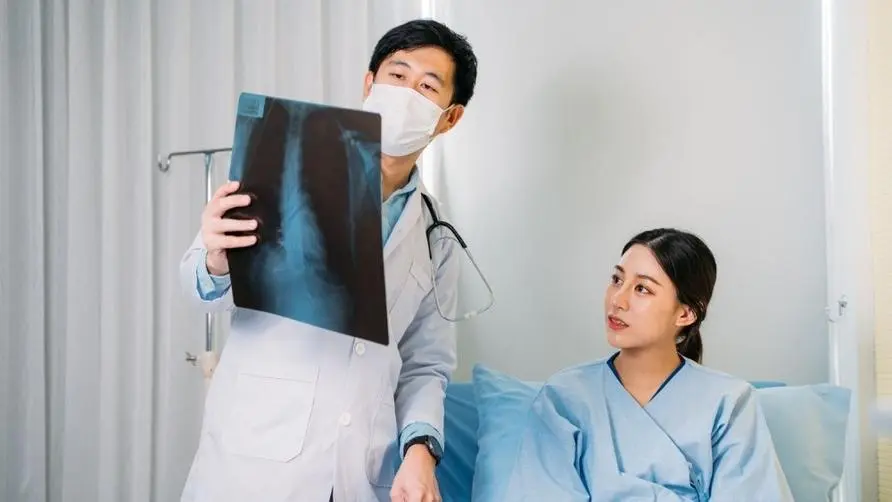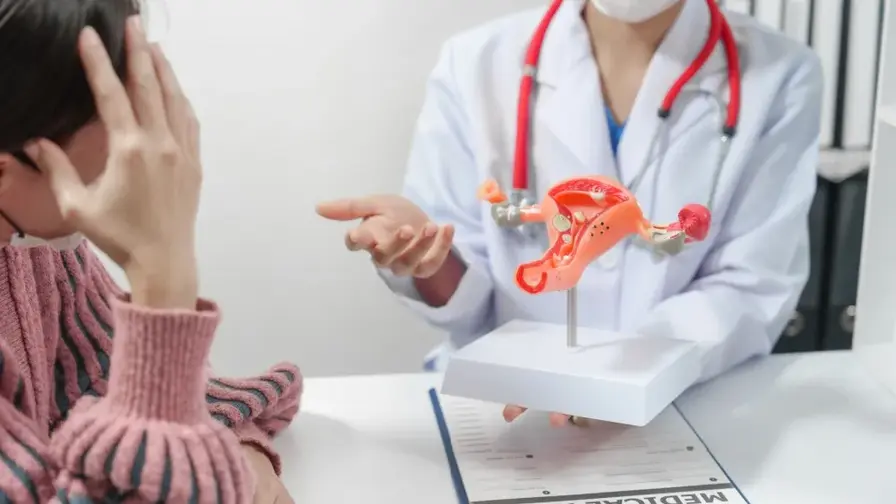0.7 centimeters is the limit! Is it difficult to detect cancer cells with traditional examinations? "1 Technology" is expected to make tumors invisible

Can you imagine cancer growing quietly and silently in your body? When cancer has not grown large enough to be detected by modern medicine, it is like an invisible enemy that develops quietly and silently in our bodies. This is called subclinical cancer. The existence of subclinical cancer reminds us that even without any obvious symptoms, we may be quietly facing life’s greatest challenges.
0.7 centimeters is the limit! Why is it difficult to detect cancer cells with traditional examinations?
For cancers such as neuroendocrine tumors of the gastrointestinal tract, patients often need to undergo repeated medical treatment for up to 7-9 years before they are diagnosed. In the face of such a hidden enemy, how can we protect ourselves, detect and fight cancer early? At present, the tumors that can be detected by routine imaging examinations in hospitals are as small as about 0.7 centimeters in diameter. There are approximately 350 million cancer cells in a malignant tumor of this size.
Therefore, before the number of cancer cells is less than 350 million, it is usually not visible on imaging. Of course, in this case, it is impossible to sample for pathological diagnosis. In other words, subclinical cancer patients cannot rely on traditional pathological tissue biopsy to obtain a confirmed diagnosis. In this case, blood may be the solution.
The tumor index currently used in routine health examinations measures proteins secreted by cells. If all cancer cells secrete this protein, then the false negatives of this test will be very low; if all normal cells do not secrete this protein, then the false positives of this test will also be very low. A method with low false negatives and low false positives is a clinically useful test. Unfortunately, the currently used tumor index is not an ideal testing method. As a result, people undergoing physical examinations become extremely nervous when they see a red letter on the tumor index and look for doctors everywhere to help them find cancer. Of course, we often hear doctors in the medical examination department comfort patients by saying, “Don’t worry about this scarlet letter, we will just continue to follow up.”
Liquid sectioning makes cancer cells in the body invisible? When her blood was drawn, a mutated oncogene was found
The way to improve is to increase the number of assessment items to make up for the shortcomings of the existing methods. Since the shortcoming of RNA-based testing is lack of specificity, we will start with indicators with strong specificity. The most specific thing is probably the mutated gene, because normal cells should not have mutated genes.
On the other hand, if a mutated gene can be detected in a blood sample, it means that there are cancer cells in the body, and the cancer cells have broken down and released the mutated (cancer) gene. The method described above for detecting cancer by analyzing RNA and DNA from blood samples is called liquid biopsy. In order to illustrate this new technology, I would like to share a practical case to let everyone understand the value of liquid slicing.
At the end of 2018, a senior manager who often socialized and occasionally felt stomach pain came to Dr. Zeng Jinyuan with a physical examination report. The tumor index CA72.4 on the report is marked in red, indicating that its value is twice the normal range. Even though a past gastric ulcer had healed, the manager was still concerned and checked this index during a health check-up. The result was a blow: CA72.4 was pointed out as an indicator of gastric cancer.
Faced with this sudden bad news, the manager, with the support of his wife, resolutely accepted an in-depth examination with precision medicine, using liquid biopsy to confirm whether there were any abnormalities in RNA and DNA, hoping to find a solution. After the senior manager finished drawing blood, he said to his wife: “You can also take a blood test by the way.” The test results came out half a month later. There was no detectable mutation in the senior manager’s blood. pylori gene, but had abnormal RNA that pointed to past H. pylori infection. Years of worries were instantly relieved.
Unfortunately, not only abnormal RNA appeared in the wife’s blood, but also mutated oncogenes could be detected. To say that she was unlucky would be better to say that she was lucky to be able to inadvertently detect the presence of cancer cells very early. It was detected so early that the cancer was detected when the gastroscopy was completely normal; it was detected so early that the cancer was detected when the tumor index was slightly higher. So, we can say of this wife, “She ’now’ has cancer.”
Liquid slices reveal the secrets of tumors! Does the cancer cell death rate reveal the total amount?
Cancer cells will die at the same time during the process of replication and growth. The reasons for the death of cancer cells are varied. It can be caused by the body’s immunity attacking the cancer cells, or it can also be caused by simply replacing the old with the new. Regardless of the reason, the DNA (including mutated genes) in the nucleus of these dead cancer cells will flow into the blood after they disintegrate.
Therefore, after we draw a blood sample and measure the content of mutated DNA in the blood, we can know how many cancer cells have died and disintegrated. This is how liquid slicing works. In the absence of medical intervention, we can assume that the death rate of cancer cells is fixed. Therefore, the higher the mutated gene detected by liquid biopsy, the higher the total number of cancer cells in the body.
Using precision medicine, the woman began regularly testing her blood for mutated DNA to assess the effectiveness of cancer prevention measures. After a year of unremitting efforts, her blood test finally found no mutated DNA, marking significant progress in treatment. This approach is not only suitable for evaluating preventive measures, but is also crucial for evaluating effects during treatment.
Whether it is traditional therapy or alternative therapy, liquid slice technology can provide instant feedback to help patients adjust their treatment plan early and avoid the time and money lost in ineffective treatment. When the test result shows “no abnormality”, this result is not only an affirmation of the treatment method, but also brings great psychological comfort to the patient. So, the wife can say, “After the ‘past’ treatment, the cancer is now gone.”
Further reading:





